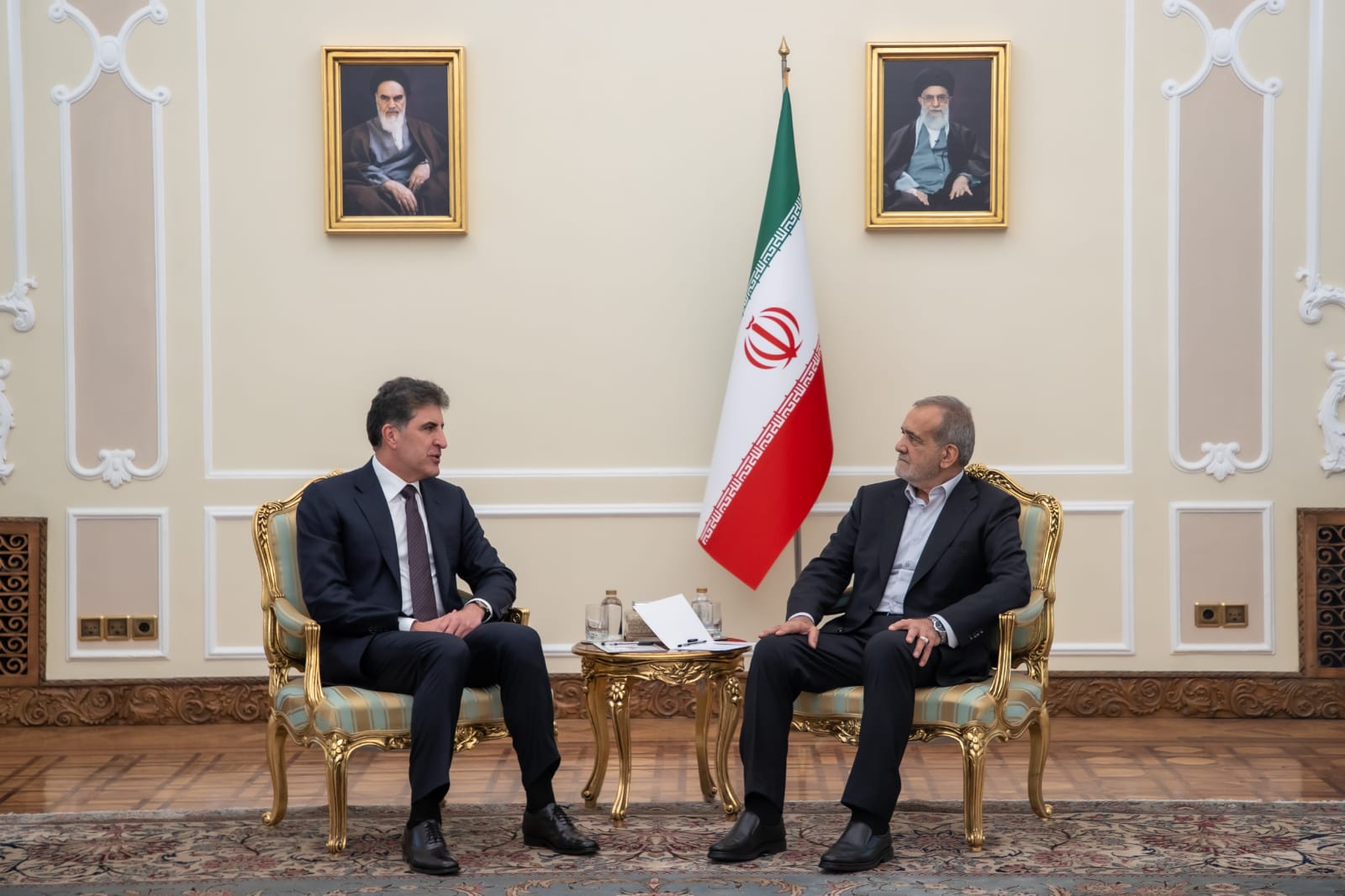Masoud Pezeshkian, the 14th President of the Islamic Republic of Iran, is set to make his first foreign visit to Iraq. This visit highlights the importance of expanding Iran-Iraq relations and has become a standard practice for recent Iranian presidents. However, the distinct and noteworthy aspect of this trip is Pezeshkian’s planned visit to Erbil, the capital of the Kurdistan Region of Iraq, as well as the city of Sulaimaniya, which is happening for the first time and is considered highly significant. This article reviews the ups and downs of relations between the Islamic Republic of Iran and the Kurdistan Region over the past five decades.
The Kurds of Iraq: Iran’s First Allies
The Kurds in Iraq were among the first friends and allies of the Islamic Republic of Iran. In the last days of his life, which coincided with the early days of post-revolutionary Iran in 1979, Mullah Mustafa Barzani congratulated the Iranian Revolution led by Imam Khomeini. Soon after, the “Temporary Leadership” of the Kurdistan Democratic Party (KDP), which took over leadership after Mullah Mustafa and whose forces were mostly in exile in Iran, immediately entered negotiations and formed an alliance with the revolutionary authorities. The conflicts in Iranian Kurdistan between the central government forces and Iranian Kurdish parties provided the KDP an opportunity to consolidate and arm its scattered forces under the pretext of assisting the new Iranian government, even at the cost of war with Iranian Kurds.
Strategic Cooperation in the War with Ba’athist Iraq
The second critical moment was the outbreak of the war between Ba’athist Iraq and Iran. This led to the formation of a new “Northern Front” in collaboration with the KDP and later the Patriotic Union of Kurdistan (PUK), alongside Iranian forces. This front helped reduce pressure on Iranian forces in the southern battlefront. Joint operations between Kurdish Peshmerga forces and Iran’s Revolutionary Guards took place across the borders and sometimes deep into Erbil, Kirkuk, Sulaimaniya, Duhok, and Diyala. Saddam Hussein’s response to the Kurds’ cooperation with Iran was brutal, including the Anfal campaign against 8,000 Barzanis (1984), the chemical bombing of Sardasht (1987), and the chemical attack on Halabja (1988).
Establishment of Islamist Kurdish Parties
In the mid-1980s, amidst the war, Iran became a supporter and even a founder of a third force in Iraqi Kurdistan: the Islamist Kurdish parties. These parties were established in Tehran with Iran’s support. Despite being Sunni Muslim parties, they have maintained relatively warm relations with Iran, which have even grown over time. Similarly, Iran has supported Hamas and Islamic Jihad in Palestine, both Sunni groups with staunch anti-Israel positions, despite the absence of Shia populations in that region.
Open Borders for Kurdish Refugees
During several Ba’athist attacks on Kurdistan, which led to the displacement of millions of Kurds in 1991. Iran always kept its borders open to Iraqi Kurdish refugees, unlike Turkey, and hosted them for many years in various regions of the country.
Resolution 688 and the Semi-Autonomous Kurdish Government
Iran’s reports in 1991 were one of the key factors prompting the UN Security Council to pass Resolution 688. This resolution aimed to protect Kurdish and Shiite Arab citizens from Ba’athist attacks, establishing no-fly zones in northern and southern Iraq. This eventually paved the way for the establishment of a semi-autonomous Kurdish government in northern Iraq.
Shifting Alliances in Iraqi Kurdistan
As mentioned, the KDP became one of Iran’s first allies following the Islamic Revolution. However, in the mid-1980s, with the escalation of the Iran-Iraq war and the failure of Jalal Talabani’s negotiations with Saddam Hussein, the PUK was added to Iran’s circle of allies. The greater strategic importance of the regions under PUK control (Sulaimaniya, Kirkuk, and Diyala provinces), Talabani’s flexibility, and his increasing cooperation with Iran made the PUK more valuable to Tehran. Throughout the 1990s, while Iran maintained relatively close relations with both the KDP and PUK, the PUK became more favored due to its broader cooperation with Iran in areas such as the economy, investment, security, culture, and education.
Civil War and the PUK’s Favor
Between 1994 and 1998, during the Kurdish civil war (often referred to as the “fratricidal war”) between the two main Kurdish parties, Iran’s support for the PUK increased. During this time, the KDP sought support from Saddam’s Ba’athist regime to balance its power, while the PUK relied on Iran’s Revolutionary Guards. This support has persisted to this day.
The Fall of the Ba’athist Regime and the Establishment of a New Iraq
Another significant period of cooperation between Iran and the Kurdish parties occurred between 2002 (a year before the U.S. invasion of Iraq) and 2005, during the political and military preparations for a regime change in Iraq. The Kurds played a key role in these changes due to their political experience and the strength of the Peshmerga forces. During this time, agreements were reached to establish a federal and democratic system in Iraq, with Iran, various Iraqi groups, and the U.S. all involved.
Iran’s Support for Federalism and Opposition to Kurdish Independence
Iran has supported the idea of extensive autonomy for the Kurds within Iraq’s political framework to prevent the spread of Kurdish separatism and independence. However, this support has always been conditional on the Kurds remaining within Iraq. In 2017, when the Kurds held an independence referendum, Iran was the main opponent of the referendum and played a significant role in its failure by supporting the central Iraqi government.
The Shiites’ Rise to Priority over the Kurds
Since 2003, with the rise of Shiite forces in Iraq, the Kurds have become a secondary priority for Iran. While the Kurds held a higher priority for Iran between the 1980s and 2003, the Shiites have taken precedence since then, often to the detriment of Kurdish relations with the central Iraqi government.
Kurdistan Region as a Balancer
Despite these ups and downs, the Kurdistan Region remains strategically important for Iran. Internationally, it is essential for Iran in its competition with Turkey. Domestically, it helps balance the power of the central Iraqi government. Furthermore, in terms of Kurdish relations, the Kurdistan Region is crucial for controlling and curbing the influence of Iranian Kurdish opposition parties that have been based in the region for decades. For these reasons, both sides, despite having different needs, share common views and interests in strengthening and expanding their relations. Masoud Pezeshkian’s visit to Iraq should be seen within this framework—a historic visit, marking the first by an Iranian president to the region. During this trip, several memorandums of understanding for expanding cooperation between the two sides are expected to be signed.
– This article represents the author’s own views.


